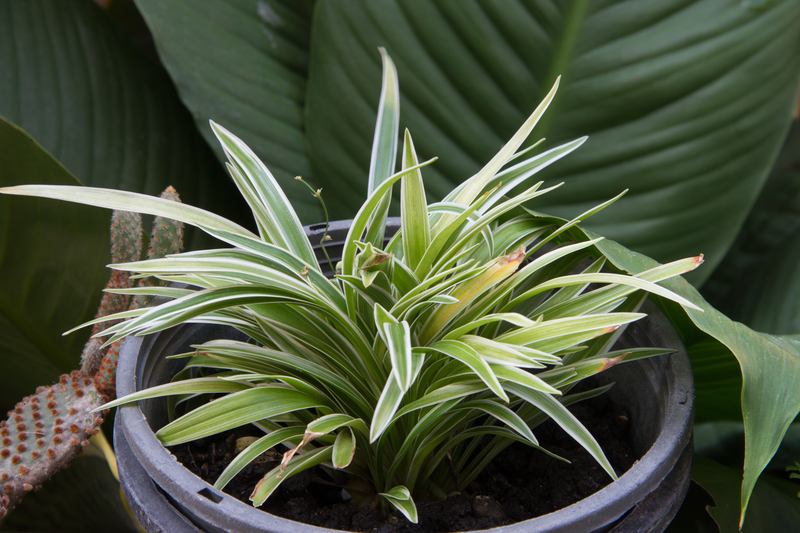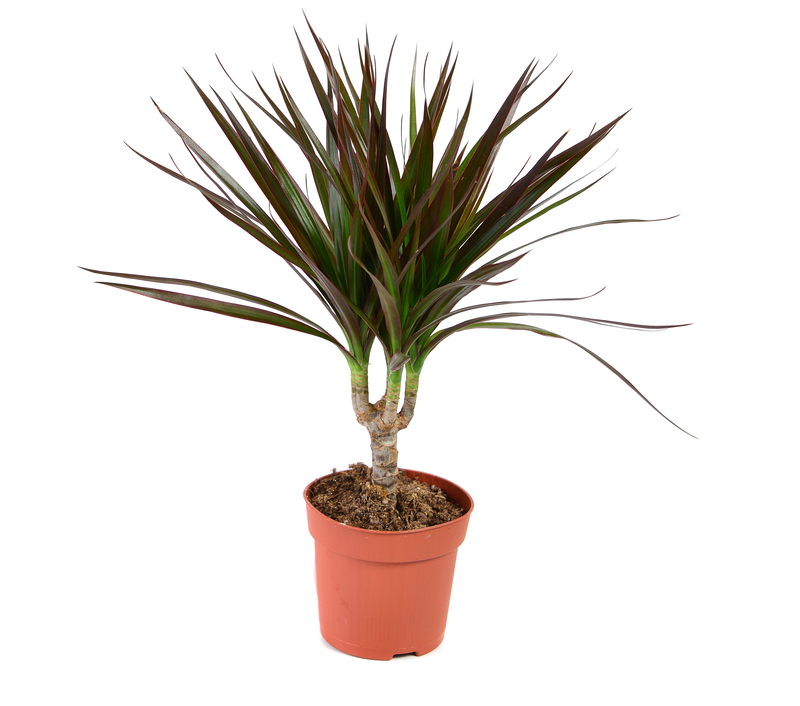A Beginner's Journey to Orchid Care Success
Posted on 27/08/2025
A Beginner's Journey to Orchid Care Success
Orchids have long enchanted plant lovers with their otherworldly beauty, exotic blooms, and fascinating variety. However, caring for these captivating plants can seem intimidating for beginners. The journey to orchid care success may feel full of mysteries and myths, but with the right information and approach, anyone can cultivate thriving orchids at home. In this comprehensive guide, we'll transform your beginner's journey to orchid care success into a rewarding experience.

Understanding Orchids: The Mystique and Diversity
Before embracing the path to successful orchid care, it helps to grasp what makes orchids so unique among houseplants. With over 25,000 species and more than 100,000 hybrids, orchids boast the largest family in the plant kingdom. This diversity means that not all orchids are created equal--but the good news is that several types are perfectly suited for beginners.
Popular Orchid Types for Beginners
- Phalaenopsis (Moth Orchids): Easy to find and care for, ideal for beginners, and capable of flowering for months.
- Dendrobium: Known for their cane-like stems and vibrant blooms; these are robust and forgiving.
- Cattleya: With striking, fragrant blossoms, Cattleyas thrive with bright light and modest care.
- Oncidium (Dancing Lady): Famous for their shower of cheerful blooms and relatively straightforward requirements.
Choosing beginner-friendly orchids is the first step on your journey to successful orchid cultivation.
Essential Elements for Successful Orchid Care
1. Light: The Lifeblood of Orchids
Light is crucial for orchid growth and flowering. Most orchids thrive in bright, indirect sunlight. An east- or west-facing window is ideal. Avoid direct midday sun, which can scorch delicate leaves. If your orchid's leaves turn yellowish-green, it likely needs more light; dark green, limp leaves mean it may be getting too little.
- Tip: Use a sheer curtain to diffuse strong sunlight.
- Under grow lights, orchids can flourish even in apartments with poor natural light.
2. Watering: Striking the Perfect Balance
Watering is perhaps the trickiest part of beginner orchid care. The golden rule? Less is often more. Orchids are sensitive to overwatering, which leads to root rot. Most species prefer to dry out slightly between waterings.
- Test the potting mix: If it feels dry an inch below the surface, it's time to water.
- Morning watering is best, allowing roots to dry out during the day.
- Never let orchids stand in water-filled saucers.
3. Humidity: Providing a Tropical Touch
Orchids hail from humid environments. Aim for 40%-60% humidity for optimal health. In dry indoor climates, you can:
- Spritz plants regularly with room-temperature water (avoid wetting the blooms).
- Place the pot on a humidity tray filled with damp pebbles.
- Consider a small humidifier nearby.
Tip: Avoid letting roots or pots sit directly in water, as this can still cause rot.
4. Temperature: Meeting Seasonal Needs
Most orchids enjoy daytime temperatures between 65?F and 80?F (18?C-27?C). Night temperatures should ideally be 10-15?F cooler. These drops encourage blooming and mimic natural rainforest conditions. Protect your orchids from drafts, sudden temperature changes, and placement near heaters or air conditioners.
5. Potting Media: Natural Homes for Robust Roots
Unlike traditional houseplants, orchids do not grow in soil. Instead, they thrive in specialized orchid mixes composed of bark, sphagnum moss, or even coconut husks. These allow air and moisture to reach the roots.
- Bark-based mix: Excellent for most epiphytic orchids like Phalaenopsis and Cattleya.
- Sphagnum moss mix: Holds more moisture, ideal for Dendrobium and young plants.
- Repot every 1-2 years or when the mix breaks down.
Feeding Orchids: How to Fertilize for Fabulously Healthy Plants
Orchids are not heavy feeders, but they do require nutrients for vigorous growth and prolific blooms. Use a balanced, water-soluble orchid fertilizer ("20-20-20" or similar) diluted to half or quarter strength. Fertilize only after watering, about once a month during active growth.
- Remember: "Weakly, weekly" is an orchid care motto--less is more.
- In winter or during dormancy, reduce feeding frequency.
Repotting: Keeping Your Orchid's Roots Healthy
Proper repotting is key to orchid care success for beginners. Over time, potting media breaks down, compacting around the roots and depriving them of oxygen.
- When to repot: Every 1-2 years, or when roots overflow the pot, media decomposes, or water drains poorly.
- How to repot: Gently remove the orchid, shake off old media, trim away any dead or mushy roots with sterilized scissors, and position in fresh orchid mix. Water lightly after repotting.
Common Orchid Problems and Their Solutions
Even attentive growers may encounter issues. Here's how to diagnose and treat common orchid ailments:
Yellowing Leaves
- Possible causes: Overwatering, low light, natural leaf aging.
- Adjust watering and ensure sufficient light. Older leaves may yellow and drop off naturally.
Wrinkled or Shriveled Leaves
- Usually a sign of underwatering or root problems.
- Check roots and increase humidity if necessary.
Root Rot
- The most common orchid killer, caused by consistently wet media.
- Solution: Remove decayed roots, improve drainage and reduce watering frequency.
Pest Issues
- Look for sticky residue, webbing, or visible insects: mealybugs, scale, and spider mites are common pests.
- Wipe leaves with a damp cloth, use insecticidal soap, or treat with neem oil (always test on a leaf first).
Encouraging Orchid Blooms: The Ultimate Reward
For many, successfully coaxing an orchid to rebloom marks the pinnacle of their orchid care journey. Remember:
- Many orchids need a seasonal temperature drop at night to trigger buds.
- Keep up with steady care and don't move the plant too often during its budding phase.
- Be patient--some species bloom only once a year, while others (like Phalaenopsis) can flower twice or even three times annually.
Orchid Care Tips for Beginners: Your Success Checklist
- Choose beginner varieties such as Phalaenopsis or Dendrobium.
- Place your orchid in bright, indirect light.
- Water thoroughly but let the potting mix dry out between waterings.
- Increase humidity around your orchid, especially in dry conditions.
- Feed sparingly with orchid fertilizer--less is more!
- Repot every 1-2 years with fresh orchid mix.
- Keep an eye out for pests and root rot.
- Encourage blooms with small temperature drops at night in the fall or early spring.
- Be patient and enjoy the process!
The Psychological Rewards of Orchid Care
Beyond their visual beauty, orchids offer another secret to garden lovers: the pleasure of patience and mindfulness. Regularly tending to your orchids, inspecting their leaves, and watching for emerging spikes can become a meditative ritual, grounding you to the rhythm of nature. Many orchid enthusiasts claim that the sense of accomplishment from a new flower spike or a vibrant bloom cycle is unparalleled among houseplants.
Myths and Misconceptions About Orchids
As you embark on your orchid care adventure, busting myths can give you confidence:
- "Orchids are impossible to grow." Fact: With the right information, orchids are no more challenging than other houseplants--they just have different needs.
- "Orchids need to be watered with ice cubes." Fact: Most orchids prefer tepid water--cold roots can damage them.
- "Orchids never rebloom." Fact: Proper care and seasonal changes can coax most orchids to flower every year or more often!
- "All orchids are rare and expensive." Fact: Many widely available hybrids are affordable and forgiving of beginner mistakes.

Recommended Tools and Accessories for Orchid Success
- Transparent orchid pots to monitor root health.
- Orchid-specific potting media for healthy roots.
- Humidity tray or small misting bottle.
- Fertilizer formulated for orchids.
- Sterile scissors or pruners for repotting.
- Soft brush or cloth for cleaning leaves.
Conclusion: Celebrate Your Orchid Care Journey
Embarking on a beginner's journey to orchid care success is both an art and a science. It's a path filled with learning, patience, and rewarding moments of discovery. By mastering the basics--light, water, humidity, potting, and nutrition--you'll unlock the secret to growing vibrant, healthy orchids.
Just remember: Start simple, observe your plants, and let your orchid-growing adventure unfold. Each new leaf, shoot, or stunning bloom will be a testament to your growing skills and patience. Over time, you may find yourself building a collection and sharing your love for orchids with friends and family.
Ready to begin your orchid journey? Nurture your first plant today and watch your indoor garden transform into an oasis of beauty, resilience, and tranquility. You're just a bloom away from orchid care success!



